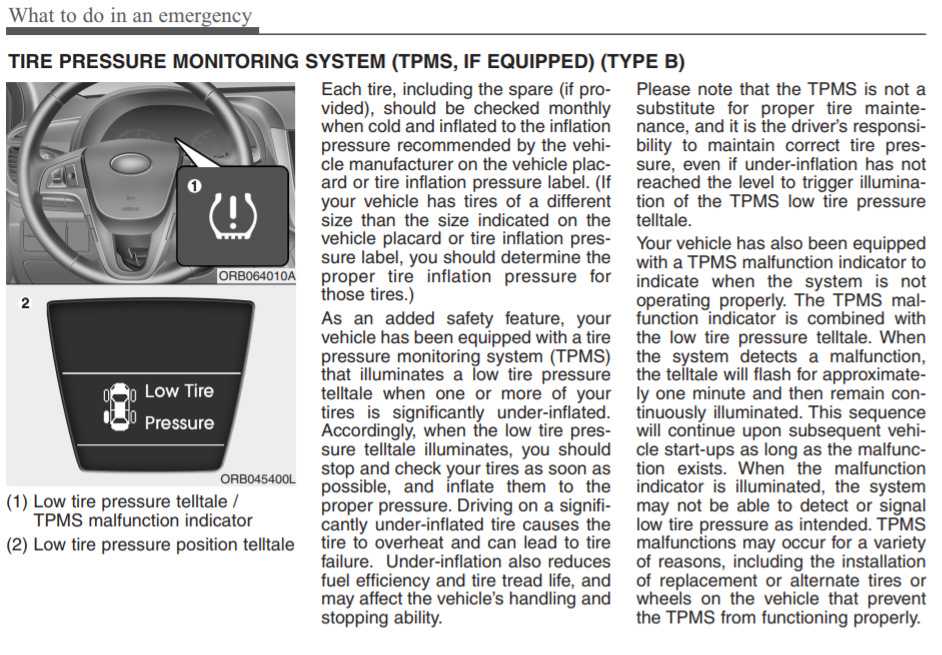The low-tire pressure light — that pesky orange light on your dashboard always seems to come on at the worst times — when you are running late for work, stuck in traffic, or on a deserted road.
I should know. About 2 months ago, I suffered a low tire-pressure induced blowout in the middle of the Howard Frankland Bridge in bumper to bumper traffic.
And it was pouring rain.
And blowing wind.
Oh, and there was some lightning too.
It was not ideal.
When you see the low-tire pressure light pop up you might feel concerned but usually not concerned enough to stop as soon as you can for air. Hell, you might choose to ignore that light for a few days or even weeks (er, possibly even longer if you are a true procrastinator)! I mean, you don’t have a flat tire (yet, you hope!) so it’s not a big deal driving with your low-tire pressure light is on, right?
Wrong! It might seem like a royal pain to stop and take care of your low-tire pressure but really — do the right thing and just get ‘er done.
The longer you leave your low tire pressure, the more you set yourself up for a litany of problems including lower gas mileage all the way to a potentially catastrophic blowout!
Why is it important to check tire pressure?Checking your tire pressure and keeping your tires properly inflated is a chore, but it is much easier than dealing with the consequences of under-inflated tires. Low tire pressure can negatively affect handling, tire wear, fuel economy, and most importantly, safety.
Low tire pressure can also cause a car to be less responsive and have less traction, making it more difficult to avoid emergency situations (think switching lanes last minute in traffic or dodging a pothole). Less traction also means that your car’s engine will have to work harder and use more gas than it needs to. According to the EPA, properly inflated tires can increase fuel efficiency by three percent or more. That is money in your pocket!
Your fuel economy suffers when you under inflate your tires.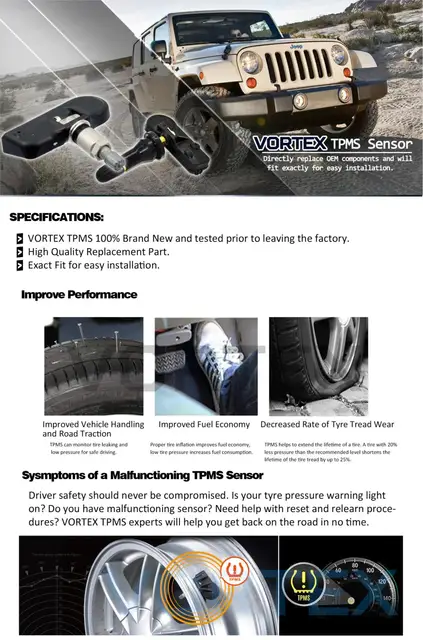 Under inflated tires can lower your gas mileage by about 0.2% for every 1 PSI drop in average pressure.
Under inflated tires can lower your gas mileage by about 0.2% for every 1 PSI drop in average pressure.
While that might not seem like a lot at first, let’s assume your tires are under inflated by about 12 psi, which is very common. Assuming you drive the nationwide average of 13,476 miles a year, your under inflated tires are wasting roughly a full tank of gas each year.
But that isn’t all.
Under-inflation causes tires to distort, leading to increased wear, especially on the sidewalls of the tires, putting your tires at an increased risk of having a blow out — something no one wants to experience.
Tire blowouts kill about 500 drivers a year, and cause well over 2,000 accidents in the United States alone.
Even worse, most tire blowouts are caused by negligent inflation of your tires. Tire pressure management systems have been mandatory since 2007, so if you’re driving a newer car, your car will tell you when it’s time to inflate.
However, if you’re driving an older car, it’s extremely important to check your tire pressure at least once a month.
It is important to know that tire pressure can be lost without a tire appearing under inflated or flat. So just because a tire looks ok, doesn’t always mean it is.
What is the lowest tire pressure you can have and still drive?We’ve already established why it doesn’t make sense to drive with low-tire pressure. However, if you’re wondering how “low you can go” and still drive your care, listen up.
If you have standard passenger tires (ninety percent of vehicles do) the lowest tire pressure you can generally drive with is 20 pounds per square inch (PSI). Anything under 20 PSI is considered a flat tire, and puts you at risk for a potentially devastating blowout.
How low does tire pressure have to be for the low tire pressure light to come on?In 2008, a federal law was put into place requiring automakers to provide tire-pressure monitoring systems (TPMS) as standard vehicle equipment. The low tire-pressure warning light will display when the tire’s air pressure is 25 percent below the automaker’s recommended PSI. A 25 percent reduction in tire pressure is considered severe. So take the low-tire pressure warning as the warning it is!
A 25 percent reduction in tire pressure is considered severe. So take the low-tire pressure warning as the warning it is!
Why are your tires low on air? Obviously, tire damage will cause tire pressure to become low but it is not the only reason for tire pressure to drop. Tires can lose pressure over time and can be affected by cold temperatures.
According to Car and Driver, tires normally lose about a pound of pressure for every 10-degree drop in temperature. It is important to check tire pressure as the seasons change to account for changes in temperature and the resultant decrease in tire pressure.
You also have to account for your tires progressively losing air. On average, your tire looses about 1 PSI per month. With most passenger tires being inflated to around 35 PSI, it doesn’t take that long for you to get into hot water.
Which makes it extra important to know when your tire pressure is low, which requires you to know the recommended pressure in the first place.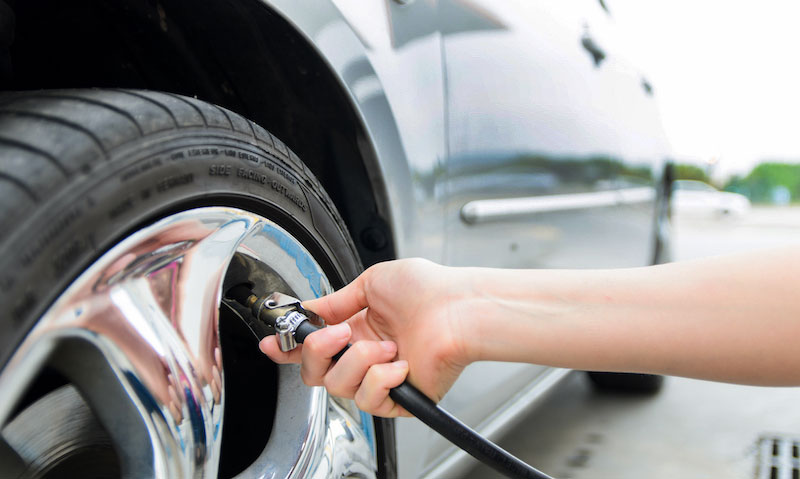
As a driver, you should be familiar with auto manufacturer’s tire pressure recommendations. You can find this information in your vehicle’s owner’s manual. It can also be found on the drivers-side door jamb.
How do tire-pressure monitoring systems work?Have you ever wondered how the whole low-tire pressure alert works? It’s pretty simple but interesting at the same time.
Tire-pressure monitoring systems use a sensor which is located in the pressurized pocket between the wheel and the tire. The sensor constantly measures the air pressure within the tire and transmits that information to the vehicle’s onboard computer. If tire pressure is low, the driver will be alerted by a low tire-pressure warning in the instrument display. Just want you (don’t!) want to see!
Can low tire pressure be caused by cold weather?Yes! Those miserably cold days can definitely cause tire pressure to decrease! Tires generally lose about a pound of pressure for every 10-degree drop in temperature. You should check tire pressure when the temperatures dip down, especially if you live in a colder climate.
You should check tire pressure when the temperatures dip down, especially if you live in a colder climate.
Just another reason that I love living in Florida.
How do you check tire pressure?So the decision has been made to buck up and check your car’s tire pressure. Nice job.
It is a good idea to have a tire-pressure gauge in your vehicle. Although some gas station air pumps have gauges, they’re not always accurate or easy to reach. It’s much better to have your own tire gauge so that you can keep an eye on tire pressure at home or on the road. You can easily buy an inexpensive, hand-held tire pressure gauge at any auto parts store or major department stores, like Target or Walmart.
Although these have been around for what feels like forever, newer digital gauges can be much more accurate. If you have it in your budget, spend the extra $5 and get a digital.
The best time to check tire pressure is first thing in the morning when the tires are “cold” or at least three hours after driving. Take off the valve cap and press the tire-pressure gauge firmly into the valve stem until the device produces a pounds-per-square-inch (PSI) reading. If you hear a hissing sound you’re releasing air from the tire and will need to push the gauge more firmly in the valve stem to get a reading.
Take off the valve cap and press the tire-pressure gauge firmly into the valve stem until the device produces a pounds-per-square-inch (PSI) reading. If you hear a hissing sound you’re releasing air from the tire and will need to push the gauge more firmly in the valve stem to get a reading.
Pressure readings are more likely to be higher (usually between 2 and 6 PSI higher) if the car has been recently driven and the tires are hot. If you do end up checking your tire pressure after driving, you should add a little extra air pressure to account for the artificially high tire pressure reading
How can I fix tire pressure?If you find your tire pressure is low you will need to add air to the tire. Many gas stations have air pumps that you can use to top off your tires. Some machines take coins only but most will also accept a credit card for payment. It usually costs a dollar or two to use an air pump — this should give you more than enough time to add whatever air you need to your tires.
To fix tire pressure:
Tire pressure should be checked monthly.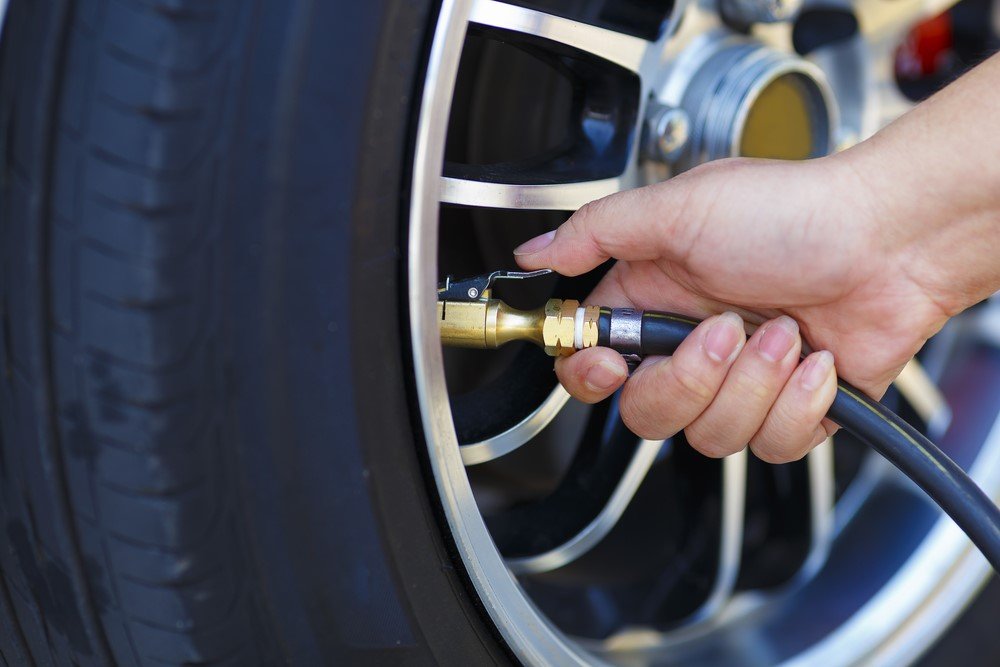 Yes, it is another item on your to-do list but the few minutes it takes to check your pressure will extend the life of your tires, increase your gas mileage, improve your vehicle’s performance, and protect your safety and the safety of other drivers!
Yes, it is another item on your to-do list but the few minutes it takes to check your pressure will extend the life of your tires, increase your gas mileage, improve your vehicle’s performance, and protect your safety and the safety of other drivers!
It’s worth doing.
You know what else is worth doing?
Getting 24/7 roadside assistance in case you ever suffer a blowout on the side of the road so you’ll never have to worry about being stranded. One call is all it takes.
You can get a tow, or a new tire and be back on the road as good as new with no hassle on your part.
This is one of the many perks you’ll get with an extended warranty policy from Protect My Car that can potentially save you thousands on expensive repairs like engine or transmission failure.
Most of our plans start at less than $2 a day. To see how affordable it can be to protect your car and get 24/7 roadside assistance to protect your car from breakdowns, visit pmcquote.com to get a free, instant quote with no phone call needed.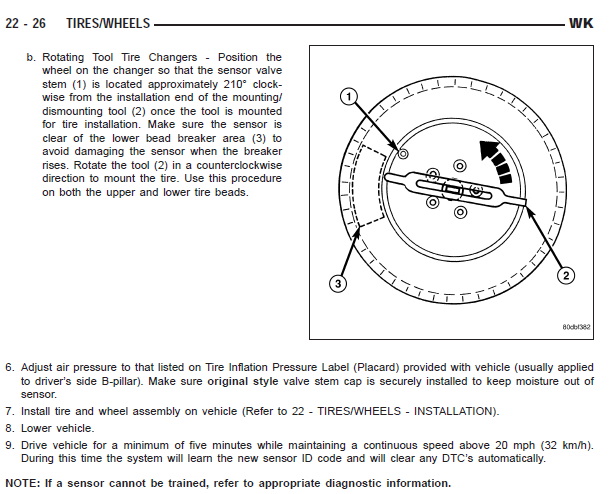
By Shawn Furman
Last Updated August 30, 2021
Most modern passenger cars come with manufacturers recommended tire pressure of about 35 pounds per square inch or PSI.
Some vehicles require slightly lower or slightly higher pressures. Regardless of what your vehicle requires, most manufacturers fit a sticker on the driver-side doorjamb showing the appropriate PSI for your vehicle. If there is no sticker, your owner’s manual should have inflation amounts listed.
The recommended inflation amount is always based on a cold tire temperature. It is recommended that tires always are kept inflated to the closest value set by the vehicle manufacturer, but most vehicles equipped with a tire pressure monitoring system will alert the driver to values about ten percent less than the specified PSI.
Technically, any PSI below the recommended amount is too low, but a deviation of more than ten percent is considered by most to be too low – for a vehicle requiring tire inflation to 35 PSI, a pressure which reads about 31 or 32 PSI is considered underinflated.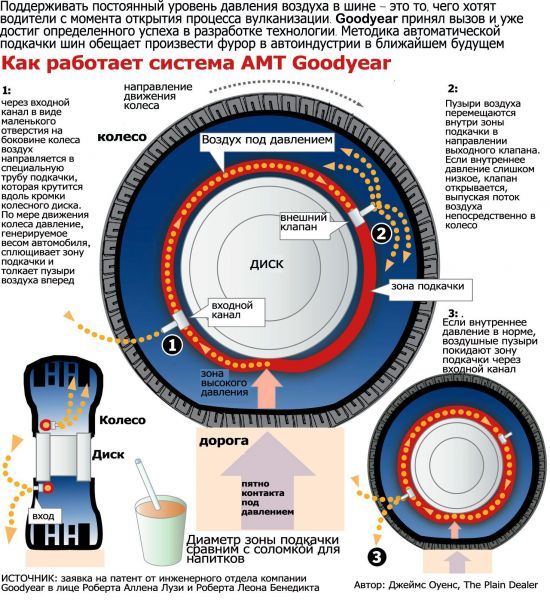 Some manufacturers can allow up to twenty-five percent air loss before the TPMS light is illuminated. A tire that shows 20 PSI or lower is usually considered to be flat.
Some manufacturers can allow up to twenty-five percent air loss before the TPMS light is illuminated. A tire that shows 20 PSI or lower is usually considered to be flat.
Besides a nail or other object putting a hole in the tire itself, the two most common issues that affect tire pressure are a slow leak and air temperature.
A slow leak is similar to a hole or a tire puncture, but rather than having a puncture which leads to a completely flat tire in a short amount of time, a slow leak is usually much more drawn out.
It can be the result of an improper seal between the wheel and tire upon application of new tires, damaged wheels, cracking tires, damaged air valve, or a previous puncture that has been repaired poorly or that has come undone. Unlike a common tire puncture, the chances of having to replace the tire because of the amount of damage are much more unlikely.
The more common factor that affects tire pressure is the air temperature. As air warms, it expands. As it cools, it contracts. This is why so many people start their vehicles on a cold morning and find the TPMS system showing low air pressure, even if it has not come on in weeks or months.
As air warms, it expands. As it cools, it contracts. This is why so many people start their vehicles on a cold morning and find the TPMS system showing low air pressure, even if it has not come on in weeks or months.
This is also why manufacturers and mechanics recommend inflating your tires when they are cool – that is when the vehicle has not been in use recently and has been sitting, not necessarily when the tires are cooled to a certain temperature.
The low tire pressure warning light in the instrument cluster is the most obvious way to know when one or more of your tires is too low. TPMS systems were mandated on all vehicles sold starting in 2008, so it is becoming harder to find one without this equipped.
Not all pre-2008 vehicles had this though, and there are still plenty of vehicles on the road that may not be equipped with TPMS. You will know if your vehicle has a tire pressure system by the flat tire icon that lights up when you turn on the ignition.
If you are still unsure, your owner’s manual will have further information. Regardless of whether or not your vehicle has a TPMS system or not, it is good practice to check your tire pressure twice a month as even a small amount of air loss can have long-term impacts if not rectified.
Tires are designed to provide the best possible fuel economy when properly inflated by combining grip with the surface area. Similarly to kicking an inflated ball versus kicking one that is not inflated, tires can bog down a vehicle, causing the engine to work harder to make it move.
A small amount of deflation may not be recognizable when you are driving, but when a vehicle is traveling at high speeds, it can make a large difference.
Some sources even estimate that a loss of up to three miles per gallon could be caused by the under-inflation of tires. This will most likely happen if there is more than one tire that is underinflated at a time.
Premature tire wear is another sign that your tire pressure is too low. Rather than having a uniform tread across the tire, an underinflated tire will wear down on each side with the tread remaining thicker in the middle.
Rather than having a uniform tread across the tire, an underinflated tire will wear down on each side with the tread remaining thicker in the middle.
The opposite will occur with an over-inflated tire where the middle of the tire will show premature balding. This is not always an obvious sign of inadequate tire pressure, especially if the tires were just installed. Even though this process might take over a year, it usually becomes obvious which tires have suffered the most from under inflation.
Another sign that your tire pressure might be too low is an increase in stopping distance from what is normal. A keen driver will notice this more than the average commuter as this is also not always the most obvious sign of under inflation, but studies show that stopping distances can be severely inhibited by under-inflated tires. In cases like these, it will become more obvious. The problem becomes even worse during rainy and snowy conditions.
Steering and driving feel are the most obvious ways to tell if your tire pressure is too low, especially if you have had your vehicle for a while and know what it is like to drive.
Vehicles were built to handle a specific way under ideal conditions, and low tire pressure affects these conditions negatively. Sloppy handling, pulling to one side, difficulty keeping the vehicle driving in a straight line, not being able to steer precisely, and a generally unsettled ride can all point to low tire pressure.
All of this becomes compounded in adverse weather conditions, and in some severe instances, it can cause the vehicle to lose all traction.
Driving with low tire pressure is a fairly common problem, but it is also one of the most dangerous. Two very serious consequences can occur as a result.
It has already been mentioned that a vehicle’s handling and steering becomes less effective when low tire pressure comes into play and that poor weather conditions can expose these issues even more.
Sudden loss of control can happen at any time when a vehicle’s tires are under-inflated, and when driving at speed, any loss of traction can cause an accident, even if no signs of irregular handling had been present before. This consequence of low tire pressure accounts for several thousand accidents per year.
This consequence of low tire pressure accounts for several thousand accidents per year.
Tire blowouts are the most dangerous consequence of low tire pressure, and they are caused by a weakened tire structure or an excessive amount of wear. Low tire pressure, coupled with the weight of the vehicle and heavy tire loads can cause one or more parts of the tire to suddenly fail. Most blowouts usually happen without warning, the main reason they can be deadly.
If a blowout occurs on your vehicle, it is important to stay calm. Usually, you will hear a loud bang, quickly followed by a sudden jerk to one side or the other.
To avoid an accident, grab the steering wheel tightly, briefly press the accelerator to resettle and realign the vehicle, then let it gradually slow down by itself as you pull to the side of the road. Once the vehicle slows to about 20-30 miles per hour, you may slowly press the brake to fully bring the vehicle to a stop.
Tire pressure becomes too low when it drops below the manufacturers recommended inflated value, often found on a sticker on the driver’s side doorjamb of a vehicle.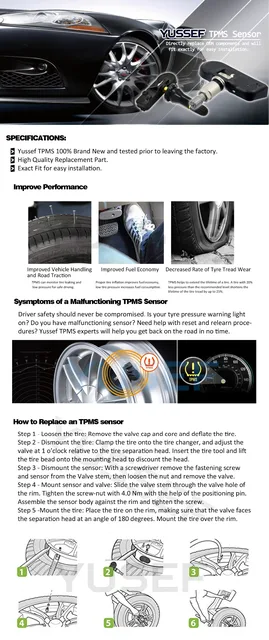
The pressure is measured in pounds per square inch, and tire pressure monitoring systems usually alert the driver to pressures that drop about ten to twenty-five percent below recommended value – usually around 35 PSI.
Checking tire pressure about two times per month can ensure that premature tire wear, increased braking distances, inadequate steering, and accidents are avoided because of low tire pressures.
expander.close}}-{{/expander.close}} Incorrect tire pressure can have serious consequences. If the tire pressure is too low, the vehicle's performance becomes weaker, such as the ability to maneuver in hydroplaning situations.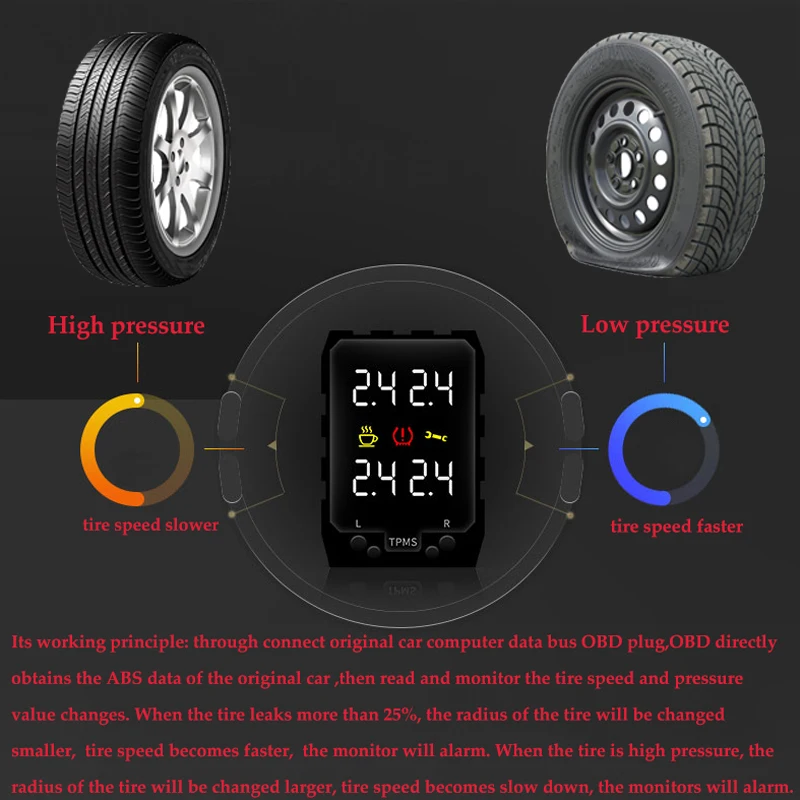 Low tire pressure also increases stopping distance. According to tests carried out by ADAC, if the pressure in one of the front tires is 1 bar (100 kPa) below the recommended pressure, the braking distance on wet roads is increased by 10 meters. If the pressure of all tires is 1 bar below the recommended pressure, the side grip of the tires will be reduced by 55 percent. Low tire pressure also leads to rapid tire wear, reduced mileage and even bursting. If the tire pressure is approximately 30 percent lower than required, tire life will be cut in half. With the right pressure, the tires steer precisely and roll easily. This reduces fuel consumption and improves driving comfort.
Low tire pressure also increases stopping distance. According to tests carried out by ADAC, if the pressure in one of the front tires is 1 bar (100 kPa) below the recommended pressure, the braking distance on wet roads is increased by 10 meters. If the pressure of all tires is 1 bar below the recommended pressure, the side grip of the tires will be reduced by 55 percent. Low tire pressure also leads to rapid tire wear, reduced mileage and even bursting. If the tire pressure is approximately 30 percent lower than required, tire life will be cut in half. With the right pressure, the tires steer precisely and roll easily. This reduces fuel consumption and improves driving comfort.
Your opinion will help us to become better!
13/16 Found this article useful
If you did not find the answer to your question, you can contact us via the feedback form.
View all articles from the
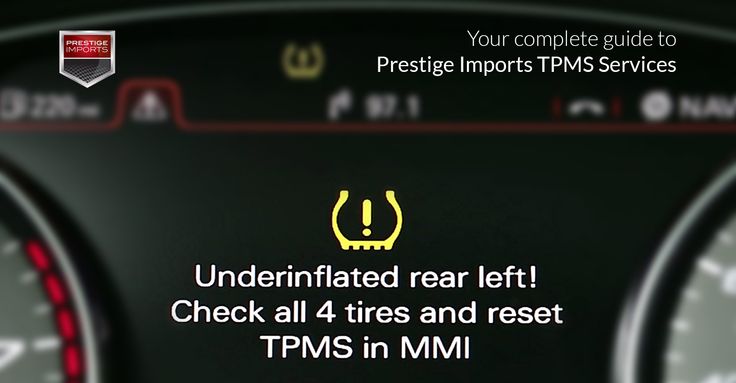 rbc.ru
rbc.ru See also
Tires are the only vehicle element that is in constant contact with the road. One of the main indicators of their serviceability is pressure. It affects not only fuel efficiency, but also safety.
As a rule, car manufacturers recommend maintaining tire pressures between 2.0 and 2.8 atm. But in practice there are situations when it is necessary to deviate from this norm.
adv.rbc.ru
Tire pressure should be checked at least once a month, there are several ways to do this. We understand why it is so important to observe the optimal pressure indicator and what it affects.
In this story:
Tire pressure is the resistance with which air "presses" on the inner area of the rubber.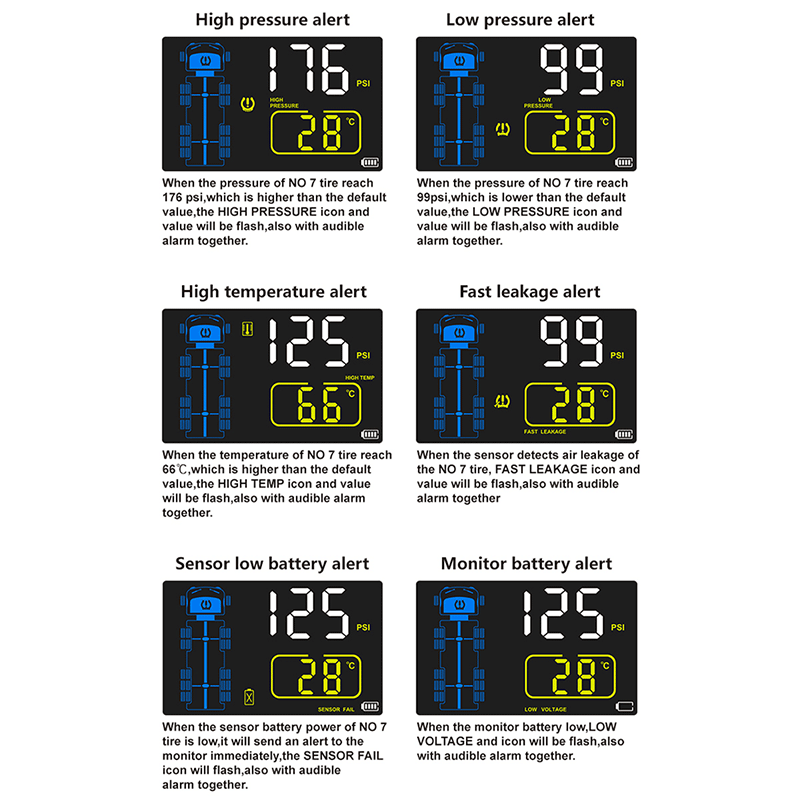 Properly inflated tires will last longer, give you better ride quality and improve your driving safety. If the pressure in the tires is too low or they are pumped over, then the car owner runs the risk of facing a number of problems: from buying new tires to the threat of an accident.
Properly inflated tires will last longer, give you better ride quality and improve your driving safety. If the pressure in the tires is too low or they are pumped over, then the car owner runs the risk of facing a number of problems: from buying new tires to the threat of an accident.
Properly inflated tires will last longer (Photo: Global Look Press)
Under-inflated tires are tires that are below the recommended pressure. In this case, the contact patch of rubber with the road increases, which leads to increased friction or rolling resistance. A worn out outer edge of the tread can visually give out such a problem.
Increased friction with the road can cause the tire to overheat, slip and even burst. In addition, low tire pressure leads to:

When tires are over-inflated, that is, above the manufacturer's recommended rate, the contact patch decreases. As a result, the main friction with the road is taken over by the central part of the tire.
Excessive tire pressure leads to excessive sensitivity to road irregularities and the risk of tire damage, even destruction. Overinflated tires also lead to the following:
Tatyana Eliseeva, an auto expert, international master of sports in motorsport, comments
For flat tires:
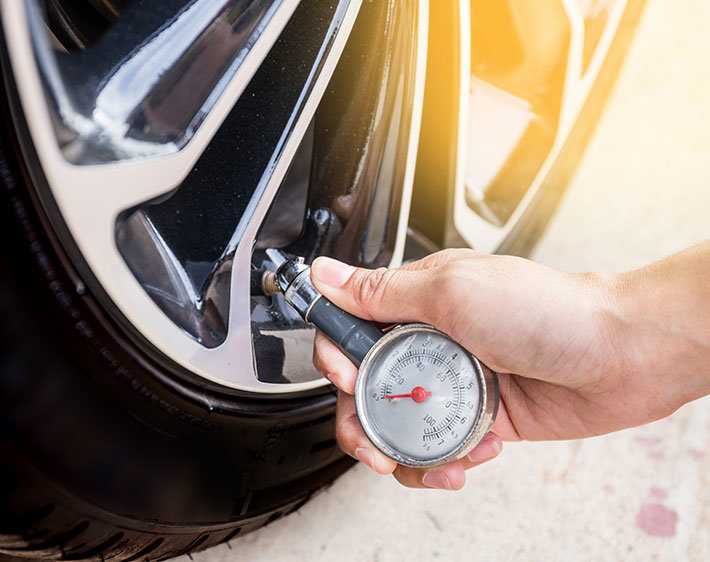
For overinflated tires:
Excessive tire pressure leads to excessive sensitivity to road irregularities and the risk of tire damage (Photo: Shutterstock)
For each car model, the manufacturer sets its own optimal tire pressure. This indicator depends on the mass of the car, the speed of operation, the number of passengers (partial or full boarding), as well as the load on the trunk [1].
The recommended tire pressure can be found in the vehicle owner's manual or on one of the plates/stickers in the passenger compartment. They can be:

Tire pressure is measured in several units. In Russia, they usually indicate in kg / cm 2 (or atmospheres) and bars (bar). These two indicators are almost equal, which is why they are often used as synonyms:
Foreign models often use pounds per square inch (pound per square inch), or psi:
For convenience, car manufacturers can indicate pressure in two units at once - bar and psi. Thus, the need to independently calculate according to the formulas disappears. Otherwise, you can do this in one of the online calculators or check the table of popular values.
| 2.0 bar | 2.1 bar | 2.2 bar | 2. 3 bar 3 bar | 2.4 bar | 2.5 bar | 2.6 bar | 2.7 bar | 2.8 bar |
| 29psi | 30psi | 32 psi | 33 psi | 35 psi | 36 psi | 38 psi | 39 psi | 41 psi |
Temperature has a significant effect on tire pressure: when it drops, the pressure in the wheels decreases with it. When the temperature drops by 10 °C, the tire deflates by an average of 0.07–0.14 bar or 1 to 2 psi [2].
Temperature has a significant effect on tire pressure (Photo: Shutterstock)
Summer tires typically use manufacturer's recommended readings. But in winter, it is advised to add about 0.2 bar to these figures [3].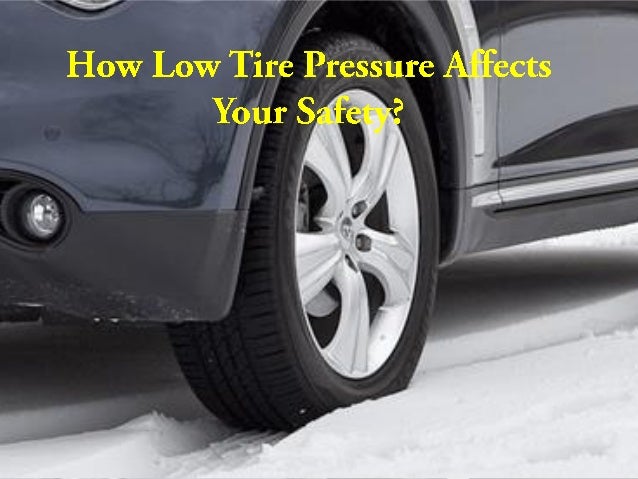
Experts also recommend checking and correcting tire pressure at outside temperature. In the cold season, swapping is best done not in a warm garage, but on the street. In summer, before such a manipulation, you should make sure that some of the wheels of the car were not under the scorching sun, while others were in the shade.
Sometimes the tire pressure needs to be adjusted according to the situation. For example, when the machine is fully loaded or a trailer is towed. For such cases, automakers, as a rule, separately indicate the optimal pressure.
But there are moments that fall into the category of extreme and non-standard (especially if before that the car most often drove around the city). Automotive expert Tatyana Eliseeva analyzed the most common of them.
Causes tires to heat up, especially in summer, so you should follow the manufacturer's recommendations before such a trip. We do not know what we will meet: patched road repairs or heavy rain. After all, for each of these situations, the recommendations will be opposite. Athletes can play with pressure when track conditions are known and engineers can always change the settings. For a long journey, the layman just needs to choose the average.
We do not know what we will meet: patched road repairs or heavy rain. After all, for each of these situations, the recommendations will be opposite. Athletes can play with pressure when track conditions are known and engineers can always change the settings. For a long journey, the layman just needs to choose the average.
Tires must be bled off, especially on sand. The question is for how much? You can bleed up to 0.7 atm, but a not very experienced motorist can slip the wheels with an inaccurate movement, and if the driver turns the steering wheel sharply (for example, trying to catch on the edge of the track), then the tire can come off the disk. And such cases occur regularly.
At near-zero temperatures on packed snow, ice or sludge for new wheels (Velcro or studded) it is better to pump the wheels a little so that water and sludge are squeezed out of the central zone of the contact patch and the tread is better worked.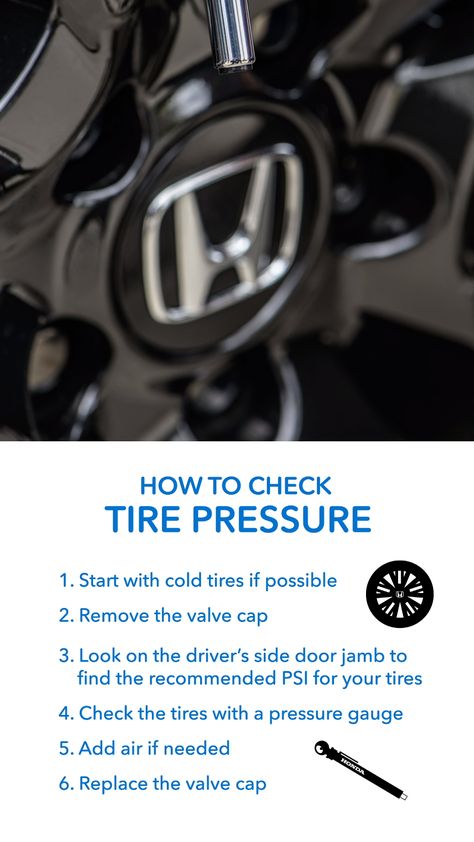 The wheel must be cleared for the tread to work. When it is clogged with snow, the braking distance and traction deteriorate greatly.
The wheel must be cleared for the tread to work. When it is clogged with snow, the braking distance and traction deteriorate greatly.
If the car has worn wheels, but with an acceptable tread depth for winter tires (4 mm), then you should not hope for the correct operation of the tread. Such a low checker no longer pushes the snow. In this case, it is necessary to reduce the pressure in the wheel, thereby increasing the same contact patch.
Photo: Global Look Press
On a country road, the weight of the machine will be an important factor. In this case, we select the pressure according to the load - specific indicators must be viewed on the central pillar of the body. There you will see something like the following recommendation: the more the car is loaded, the higher the pressure in the rear wheels should be.
But a heavily rutted road can lead to bulges, ruptures and tire damage. Therefore, if we increase the pressure, then we drive on a bad road as calmly and measuredly as possible. Or we slightly deviate from the manufacturer's recommendations and raise the pressure not as much as the manufacturer recommends.
Or we slightly deviate from the manufacturer's recommendations and raise the pressure not as much as the manufacturer recommends.
The main factor in changing the behavior of the wheel is not the pressure drop at altitude, but the presence of a large number of sharp turns and long braking. The tire will heat up not only from the loads, but also from the operation of the brake mechanisms. Therefore, the idea that due to low pressure it is necessary to increase the pressure in the tires is wrong, because the temperature of the wheel has a much greater influence in this case.
The recommended pressure is always given when the tires are cold. This means that the vehicle has not been driven for three hours or has traveled less than 1 mile (or one mile).
There are two ways to check tire pressure: do it yourself or at a workshop. In the first case, it is enough to use a public pump at a gas station or purchase a pressure gauge. This tire pressure measuring device comes in three types:
This tire pressure measuring device comes in three types:
Another option is to install special pressure control caps on each nipple. Such a gadget works as follows: the upper part of the cap is transparent and, depending on the level of pressure, an indicator of three colors appears in it. Green - the pressure is normal, yellow - the tire is flat, red - the pressure has exceeded the norm.
Photo: Shutterstock
The easiest way to monitor tire pressure is with the automatic TPMS (Tire Pressure Monitor System). Today it is installed on almost all models, and in some countries its presence is a prerequisite for releasing a car from the assembly line.
In such systems, the electronics automatically detects changes in the tire, and if the pressure drops below the recommended value, a warning signal lights up on the on-board computer screen.
There are two types of TPMS:
Car manufacturers recommend checking tire pressure every two weeks, but at least once a month. Indeed, even under ideal conditions (for example, the car is idle for a long time), the wheels lose approximately 0.069bar, or 1 psi, per month [4].
Check the pressure before and after a long trip, during a sudden change in temperature (for example, during the first frost or warming), and also after changing tires or driving with a load.